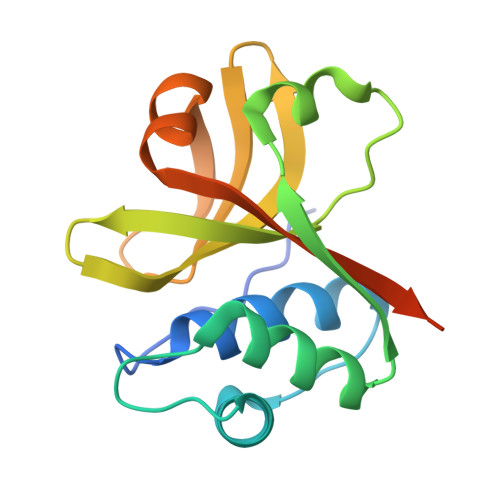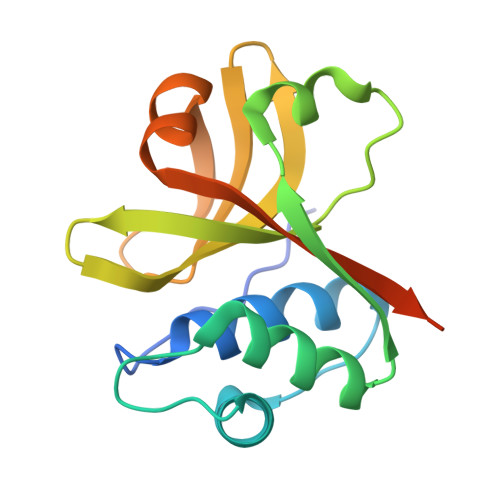Crystal structure of the peptidase domain of Streptococcus ComA, a bifunctional ATP-binding cassette transporter involved in the quorum-sensing pathway
Ishii, S., Yano, T., Ebihara, A., Okamoto, A., Manzoku, M., Hayashi, H.(2010) J Biological Chem 285: 10777-10785
- PubMed: 20100826
- DOI: https://doi.org/10.1074/jbc.M109.093781
- Primary Citation of Related Structures:
3K8U - PubMed Abstract:
ComA of Streptococcus is a member of the bacteriocin-associated ATP-binding cassette transporter family and is postulated to be responsible for both the processing of the propeptide ComC and secretion of the mature quorum-sensing signal. The 150-amino acid peptidase domain (PEP) of ComA specifically recognizes an extended region of ComC that is 15 amino acids in length. It has been proposed that an amphipathic alpha-helix formed by the N-terminal leader region of ComC, as well as the Gly-Gly motif at the cleavage site, is critical for the PEP-ComC interaction. To elucidate the substrate recognition mechanism, we determined the three-dimensional crystal structure of Streptococcus mutans PEP and then constructed models for the PEP.ComC complexes. PEP had an overall structure similar to the papain-like cysteine proteases as has long been predicted. The active site was located at the bottom of a narrow cleft, which is suitable for binding the Gly-Gly motif. Together with the results from mutational experiments, a shallow hydrophobic concave surface of PEP was proposed as a site that accommodates the N-terminal helix of ComC. This dual mode of substrate recognition would provide the small PEP domain with an extremely high substrate specificity.
Organizational Affiliation:
Department of Biochemistry, Osaka Medical College, Takatsuki, Osaka 569-8686, Japan.
















